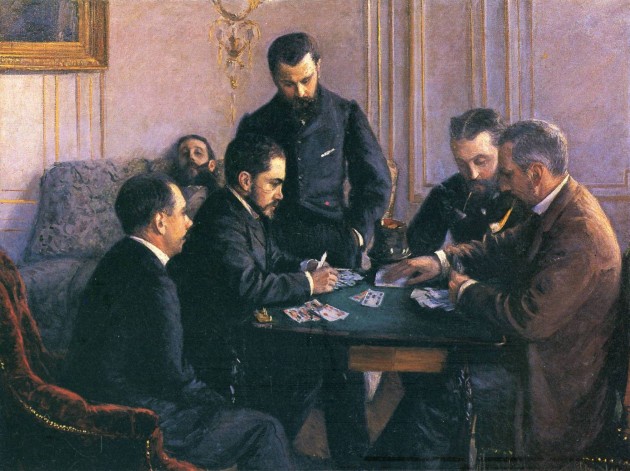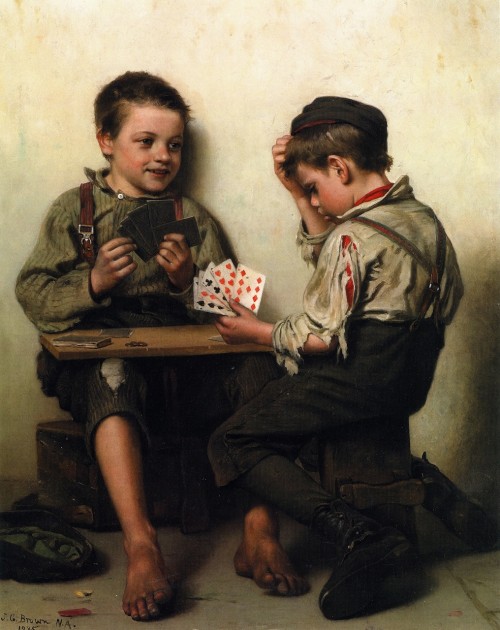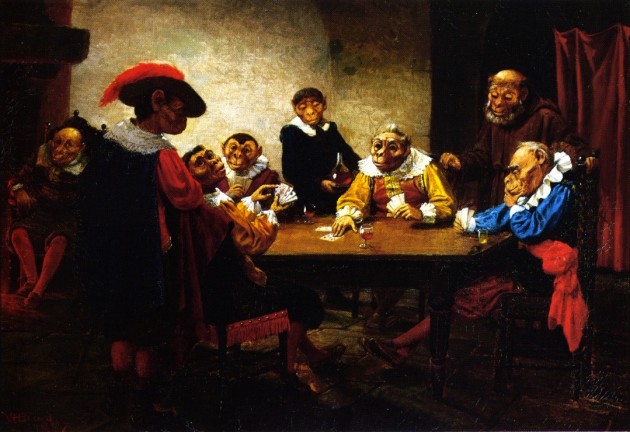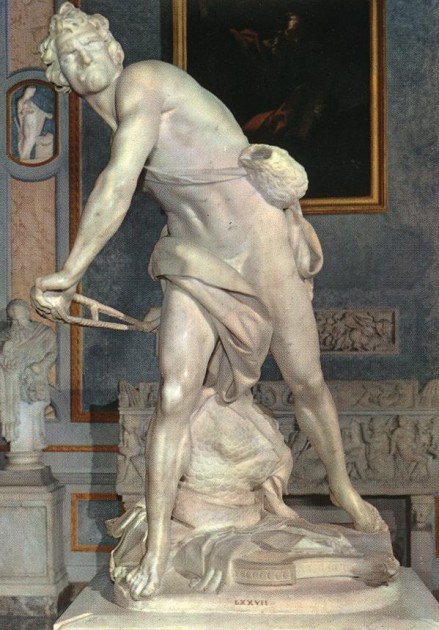Thursday, February 4th, 2021
Guest Post: “Some Notes on Parrot Symbolism in Poetry and Religious Art”
Editor’s Note: Nicholas Bielby contacted me after coming across my post “Parrots in Art.” Below is his essay on parrots in poetry and religious art, which adds new ideas to consider in tandem with the things that I have written previously. Enjoy! -M
“Some Notes on Parrot Symbolism in Poetry and Religious Art”
Nicholas Bielby

Detail of some of the carved parrots, nestled in the gold foliage, from the chancel at the Studley Royal chapel of St. Mary, 1871-78. Image is a detail of a Creative Commons Image via Wikipedia
When I took a guided tour of William Burges’s gothic revival church in the grounds of Studley Royal, I was struck by the way the chancel was decorated with highly coloured relief carvings of parrots. I asked the guide, David Thornton, about their significance and he did not know. But we decided to explore the matter further and keep in touch. What follows is the result of our joint explorations.
Macrobius records that, after the battle of Actium, where Octavian defeated Mark Antony and Cleopatra, a parrot greeted the victor, “Ave Caesar” – “Hail, Caesar!” Ever since the first parrot was brought back from India by Alexander the Great, parrots were thought to be miraculous because they spoke with a human voice. And what they generally said was “Ave”, the Latin greeting. Because of their miraculous ability to talk, gorgeous plumage and rarity, parrots were highly valued and used as gifts between kings and emperors. The parrot’s greeting to Octavian, later Augustus Caesar, was subsequently, in the Christian era, taken to be a pre-figuring of the angelic greeting, “Ave Maria.” The parrot was thus associated with the Virgin Mary.
It is not clear whether this association is the only route by which the parrot came to symbolise the Virgin Mary. But Boehrer, in his book “Parrot Culture,” (2004), cites a Middle English Dictionary as defining “papejai” as (i) a parrot and (ii) a lady, the Virgin Mary. He suggests that the rarity, value and decorative qualities of the parrot help make it represent ladies generally: “and the Virgin, most precious and delicate lady of all, stands in for all the others.”
Perhaps the most explicit evidence comes from the poet John Lydgate (C15th) in his Balade in Commendation of Our Lady, where he hails the Virgin Mary as a “popynjay plumed in clennesse.” The term “popynjay” (popinjay) comes from the Old French “papingay” meaning parrot, which itself derives from Arabic. Of course, in English from Shakespeare’s time at least the term “popinjay” is used to describe someone foppishly over-dressed and vain. But clearly, for Lydgate, the connotations of rarity and high value are what he has in mind. The term “clennesse” refers to moral and sexual purity. And the term ‘popinjay’ is the term for parrots in traditional heraldry. They would not be used on coats of arms to denote foppish vanity! They had, partly from the Middle East, connotations of wisdom and courage, and possibly more religious connotations.
Around 1400, the term “papiayes” is used in Sir Gawain and the Grene Knight in the heraldic description of the cloak that the ladies of the court embroider for Gawain when setting out on his quest. It is significant that Gawain should be afforded the protection of the Virgin Mary, as symbolised by the parrots, since one of the major challenges for Gawain on his quest is to retain his sexual purity while still maintaining his reputation for courtesy.
It is worth noting that Boeher mentions two medieval church vestments embroidered with popinjays – we may presume with religious, Marian significance. After all, since the medieval mind found symbols and correspondences in everything, the use of parrots was certainly not merely for decorative effect but for spiritual meaning!
The parrot often appears alongside the Virgin Mary in art. Richard Verdi’s “The Parrot in Art” traces the parrot from Dürer to the modern day, but there are even earlier instances. Clearly, not all these parrots symbolise the Virgin, but Crivelli (c1481), Dürer, Baldung, Mantegna, Schongauer, Van Eyck and the Ms painting by the Egerton Master all feature a parrot with the Virgin.

Parrot from Zaragoza version of the “Defensorium inviolatae virginatatis beatae mariae” by Franciscus de Retz (1343-1427)
In an image from the Zaragoza version of the “Defensorium” by Franciscus de Retz (1343-1427), a ferocious-looking parrot has a scroll issuing from its beak saying, “Ave.” It immediately follows an image of the Annunciation. The text beneath the parrot illustration seems to refer to a medieval folk-belief mentioned in the “Continuum Encyclopedia of Animal Symbolism in Art,” (2004), that conception takes place through the ear. And here it would seem to link with the parrot’s miraculous ability to speak. I have tried to transliterate the text correctly but the use of medieval Spanish diacritical marks and abbreviations have made this difficult. For example, I think it reasonable to expand ‘vgo pura’ to ‘virgo pura.’ I feel fairly confident about transcribing this much of the text:
“Ptisacus [presumably ‘psitacus’] a natura. si ave dicere valet. quare virgo pura. per ave non generaret…”
The apparent full stops would appear to indicate line divisions into something like goliardic rhymed verse, thus,
Psitacus a natura
Si Ave dicere valet
Quare virgo pura
Per ave generaret
This can be understood in the light of the folk-belief mentioned above that impregnation can take place through the ear – and consequently as a result of being greeted. It may mean something like, “If a parrot, by nature, has the power to speak a greeting, why should not, through a greeting, a pure virgin become pregnant?” What this demonstrates is not so much that the parrot symbolises the Virgin Mary but it does show her close association with the parrot in the medieval mind.
Later on, parrots feature in religious paintings, even if not immediately associated with the Virgin. Rubens includes a parrot in a painting of the Holy Family. Both Dürer and Rubens include a parrot in pictures of Adam and Eve at the Fall, when eating the apple. Here, I think, the symbolism is different. Skelton (early C16th) refers to the parrot, in Speke, Parrot, as “a byrde of Paradyse”. Maybe Dürer’s parrot, totally unaware of what is going on, simply signifies paradise, unaware of the danger it is in. In Rubens’ picture, the parrot is looking anxiously towards the serpent, aware of the danger. It would be far-fetched to see these parrots as long-term symbols of hope, the promise of the New Adam coming through Mary.
In general, by the time we get to the C16th and C17th, “popinjay” has come only to have its current derogatory meaning. It religious connotations seem to have been lost. For Dutch artists, parrots simply represent affluence, conspicuous consumption and trade connections with exotic places; and as time goes on, sometimes as symbols of vanity. Perhaps the Reformation, prevalent in the Low Countries, caused the Marian symbolism to be lost.
In the C19th, William Burges, follower of Pugin, was a great medievalist and collector of Dürer. Significantly, his church at Studley Royal, decorated in the chancel with a frieze of brightly coloured parrots, is dedicated to the Virgin. It is a fair guess that he had rediscovered the medieval Marian symbolism of the parrot. The same symbolic use of parrots can be found elsewhere in his work, for example in the chapel at Mount Stuart on Bute and in Cardiff Castle.
Nicholas Bielby is a retired faculty member of the School of Education at Leeds University. He is a poet and editor of www.graftpoetry.co.uk







